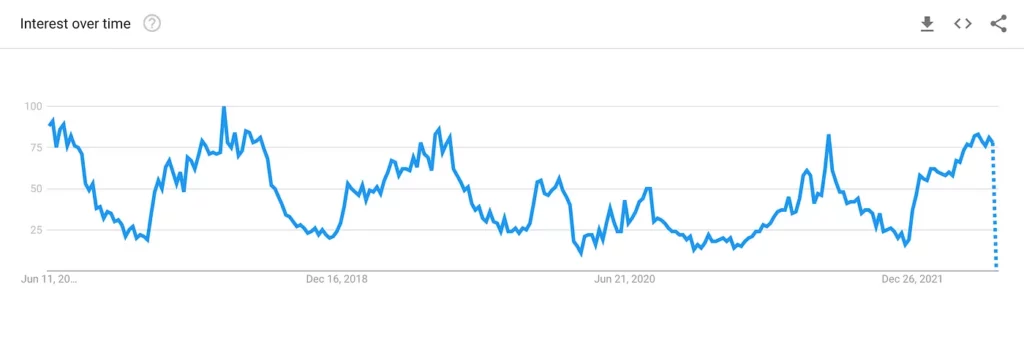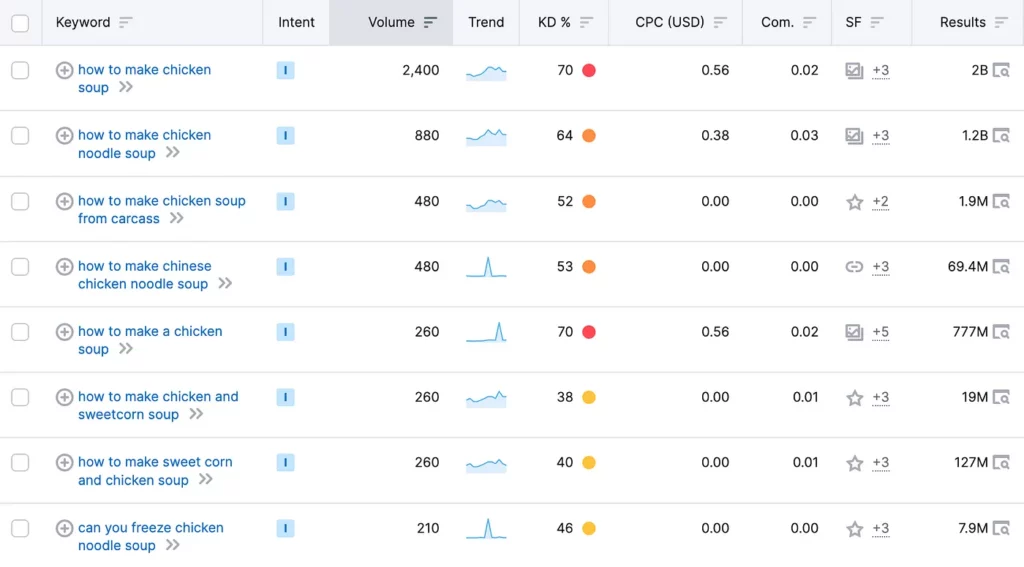Harnessing the power of search data with these five types of search data to gain valuable insights into your consumer needs and behaviours.
You’ve worked hard to get your brand in front of the people who matter most: your target audience, or target “personas.”
But once you get that far, how can you understand what they need from your brand? And how can you use that information to create content that helps them and positions your company for success at the same time?
The answer is simpler than it might seem: try searching for terms related to your products and services.
You’ll find a lot of insights about what questions people have in their heads, giving you a great starting point for making content that informs and delights readers while simultaneously establishing yourself as an authority in the field.
What does your audience search for?
People are always searching for something.
They’re looking for specific things, like “how to make a birthday cake,” or they’re looking for broader concepts, like “what’s the best way to celebrate my wife’s birthday?”
When you look at the data from your site and how it compares with data from other sites, you can start identifying commonalities among searches that may not be obvious at first glance.
How often do they search?
You can use keyword data to see how often people are searching for particular keywords, or you can look at the number of searches performed in a given period.

Semrush Keyword Magic Tool
You can also compare your search trends with similar companies and industries, helping you better understand what consumers want from your industry.
How do their needs change over time?
As you’ll see in the following section, search data is an excellent tool for understanding consumer behaviour.
But before you embark on your data-driven journey of discovery, it’s essential to put your data into context and consider what it can tell you about your consumers’ needs.
The first thing to keep in mind is that consumer needs are dynamic.
They change depending on the seasons, events happening around them and other external factors such as technology changes and cultural shifts.
Understanding how these changing needs affect consumer behaviour will help guide planning decisions for your brand. A great tool here is Google Trends as highlighted below.
When do they search?
Search data can be used to understand the following:
When do they search? If you have a seasonal product, like swimsuits, you may want to know when people are searching for your products. You can use this information to plan advertising campaigns or marketing events at those times of the year.

Keyword Trend Graph for ‘swimsuits in the UK’
What time of day are they searching? Knowing when people are searching for your product can give you insight into how critical timing is in converting them into customers. For example, if most searches happen during lunchtime on weekdays, it might make sense for you to invest in a paid search lunchtime promotion to increase sales.
Where do they search from?
When looking at search data, it’s essential to consider where your customers are searching.
If they’re based in New York and searching for a business or service that would be handy in Seattle, that might indicate a need for expansion.
Search location is also a helpful indicator of what people look for when searching on Google (other search engines exist).
Notice this happening with any particular keywords or phrases on your site?
It may be worthwhile adjusting your strategy accordingly — you can use this information as part of your decision making process about how best to target new customers in different countries and cities!
For example, if you’re selling food products, you might want to know which recipes are most popular among your customers. Knowing that may help you focus on creating more recipes in the same vein or offer new products related to the most popular ones. For example, this is the semrush data for just a handful of potential questions about chicken soup.

Search data can help you understand what questions your target audience has
Search data can also tell you how people feel about a given topic.
For example, if search terms like “healthy snacks” or “low-calorie ice cream” rank highly on your site, it could mean that consumers are looking for ways to eat healthier and exercise more — and there may be opportunities for your brand to expand in that space!
Lastly, search data can show what people are doing in real life — which might tell us how they feel about certain things (like food).
Using search data to understand your consumers’ needs
Understanding your target audience is key to formulating a successful marketing strategy.
Going a step further and understanding search data is a proven way to provide valuable content for your audience and help you answer questions, driving traffic for you target persona and audience even further.
Harnessing the Power of Search Data: In Summary
In conclusion, unlocking valuable insights into consumer needs and behaviours is pivotal in steering your brand toward success. Having meticulously placed your brand in the limelight of your target audience, understanding their desires becomes the next crucial endeavour.
The key lies in the simplicity of the solution: delve into the world of search data.
By exploring terms directly related to your products and services, you embark on a journey of unravelling the intricate web of consumer intent.
This search data is a treasure trove of information, offering a nuanced understanding of your audience’s needs. Each search term paints a unique portrait of consumer needs, from the broad strokes of general interests to the fine details of specific queries.
Whether uncovering trends, identifying pain points, or discovering unmet needs, the insights derived from search data pave the way for strategic content creation. This content addresses your audience’s needs and positions your brand as a solution provider in their eyes. It’s the fusion of understanding and action, where consumer insights seamlessly translate into content that resonates, fosters engagement, and propels your company toward sustained success.
In essence, the journey from gaining visibility to becoming a valuable resource for your audience involves the art of listening – listening to the unspoken queries embedded in search data.
Through this attentive approach, your brand not only meets the needs of your audience but also anticipates them, creating a symbiotic relationship that forms the foundation of lasting success.
Embark on a journey to success by weaving data-driven growth marketing strategies into your approach. Today, as I share these insights with you, I invite you to implement these strategies into your own growth marketing approach. Are you ready to elevate your strategy?


